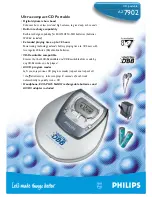
Instrument Function
R&S
®
SMJ100A
182
Operating Manual 1403.7458.32 ─ 14
data of the signal. The restart signal for restarting the PRBS calculation is only impor-
tant for the bit error rate measurement.
5.4.2 PRBS data
To be able to detect faulty bits by a BER measurement, the data generation polynomial
must be known. PRBS sequences are therefore used as the method for computing the
data (see
Chapter 5.8.1.1, "Internal PRBS Data and Data Patterns"
These quasi-random bit sequences are repeated periodically, depending on the poly-
nomial selected. A randomly selected initial status yields exactly one subsequent sta-
tus. The initial status and therefore the subsequent status occur only once in the whole
sequence.
Hence an advantage of the PRBS data is that the bit error detector must know only the
polynomial but not the entire sequence. At the start of a measurement, the feedback
shift register is filled once with the applied data sequence (which corresponds to the
synchronization time) and is subsequently switched from "fill" to "feedback". This cre-
ates a defined initial status and generates exactly the same data that the applied data
stream should have. Faulty bits can thus be identified and counted by comparing the
received data with the results obtained from the shift register.
Creating a defined initial status makes it possible to start the analysis anywhere in the
bit stream, i.e. the bit-stream source and the analyzer need not be synchronized.
Delays of the DUT and transmission over long air paths, where the transmitter and the
receiver are located at separate sites, therefore do not present a problem.
5.4.3 CRC polynomial
In the block error rate measurement, the checksum (CRC) that contains the data signal
fed to the DUT is compared with the checksum that the block error rate tester calcu-
lates from the feedback data. If the two checksums differ, a block error is counted. The
quotient obtained by dividing the number of faulty blocks by the total number of blocks
is the block error rate.
At the beginning of the data, the shift register is initialized with 0. All user data bits are
then shifted through the shift register. The CRC component is then read into a second
register and compared bit by bit with the result of the calculation.
CCITT CRC 16 : G(x) = x
16
+ x
12
+ x
5
+ x
1
is the CRC polynomial supported.
The user data is marked by a signal that comes from the DUT and is fed to the "Data
Enable" input of the BERT interface.
5.4.4 Clock signal
Usually the clock signal is provided by the DUT. If not, the bit clock can be extracted
from the CLOCK output connector (only with "Custom Dig Mod" signals in realtime). If
signals complying with other digital standards are generated or if ARB waveforms are
used, a marker signal can be used as a clock. As the DUT causes a delay, the ratio of
Bit and Block Error Rate Measurements - BERT Block
Summary of Contents for SMJ100A
Page 34: ...Preface R S SMJ100A 18 Operating Manual 1403 7458 32 14 Notes on Screenshots...
Page 86: ...Preparing for Use R S SMJ100A 70 Operating Manual 1403 7458 32 14 LXI Configuration...
Page 826: ...Remote Control Commands R S SMJ100A 810 Operating Manual 1403 7458 32 14 UNIT Subsystem...
Page 828: ...Maintenance R S SMJ100A 812 Operating Manual 1403 7458 32 14 Storing and Packing...
Page 844: ...Hardware Interfaces R S SMJ100A 828 Operating Manual 1403 7458 32 14 BERT Connector...
















































